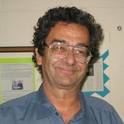
Contribution to Book
Critical Space Infrastructures and Quantum Computing
Space Infrastructures: From Risk to Resilience Governance
(2020)
Abstract
From very recent experiments in microgravity on sounding rockets [1], ultra cold alkali atoms have been forced into a Bose-Einstein condensate (BEC). Moreover, by using resonant microwave pulses on the internal structure of the BEC followed by a selection operator (“coin”) for streaming, Dadras et. al. [2.3] have achieved a momentum quantum walk of a BEC. The differences between a classical and quantum walker [4] are summarized as well as the two basic unitary operators necessary for the quantum walker: these unitary operators play essentially the same role in our unitary qubit lattice gas algorithms (QLA) for nonlinear physics that we have been developing for some time. The QLA is discussed and examples are given for 1D soliton collisions as well as determining a quasi-stable vortex soliton in self-defocusing nonlinear media. The QLA can be directly encoded on a quantum computer.
Disciplines
Publication Date
2020
Editor
Unal Tatar, Adrian V. Gheorghe, Omer F. Keskin, Jean Muylaert
Series
NATO Science for Peace and Security Series - D: Information and Communication Security
DOI
https://www.doi.org/10.3233/NICSP200024
Citation Information
Linda Vahala, George Vahala and Min Soe. "Critical Space Infrastructures and Quantum Computing" Space Infrastructures: From Risk to Resilience Governance Vol. 57 (2020) p. 223 - 242 Available at: http://works.bepress.com/george-vahala/11/
